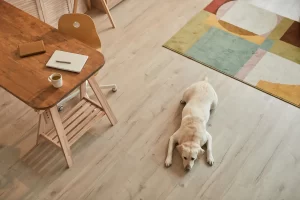How to Fix Floor Tiles Without Using Tile Adhesive

Using a tile adhesive to repair cracked tiles can save you a lot of money. However, you should be careful not to tear the surrounding tiles when you’re working with adhesive. In the long run, you’ll end up with more problems than a cracked tile. Also, if you are not careful when repairing cracked tiles, water will seep under the tile and cause mold. Even worse, you might end up tearing up the entire tile.
If you have cracked or loose floor tiles, you may not want to hire a contractor to replace them. However, repairing a tile yourself can save you a lot of money, as you won’t have to spend a lot of time and money on hiring a contractor to repair your tile. Occasionally, manufacturers stop selling a tile for some reason, so you may have to find a replacement tile to avoid having to pay for it all over again.
First, remove any loose tiles and old grout. You may need to use a hammer and cold chisel to remove the tile, but be careful not to break it. Because ceramic tile is brittle, it’s important to use caution when chiseling. If you accidentally break a tile, it will fall apart and you won’t be able to use it again. If you can’t remove the loose tile, you can use a chisel to pry it off. Be sure to wear safety goggles while working on your tile.
Loose tiles can be caused by improperly applied adhesive or other factors. It can be caused by traffic, a hollow space, or an improper installation of expansion joints. These are gaps in your floor that may create stress on the tile and cause it to come loose. Therefore, it’s important to know how to fix floor tiles properly to prevent further damage. The following are some tips on how to fix loose tiles. If you are unsure, don’t hesitate to ask a professional for advice.
The next step is to make sure the tile is properly adhered to the substrate. Remove any loose tiles that might have fallen off. Make sure the floor is free of contaminants and sealer treatments. If there’s any unevenness in the floor, you can use self-levelling compound to level the surface. If it’s still uneven, you can use a self-levelling compound to even out the surface and ensure that the tile is firmly fixed.
If your room is not regular, it is a good idea to divide the space into smaller rectangles or squares. Also, purchase extra tiles to cover any miscalculations or breakages. Make sure that you purchase the tiles from the same batch. Otherwise, you may end up with different-coloured tiles than what you’d planned. Also, be sure to keep the grout joint level. You should use a spacer between two rows of tiles.






